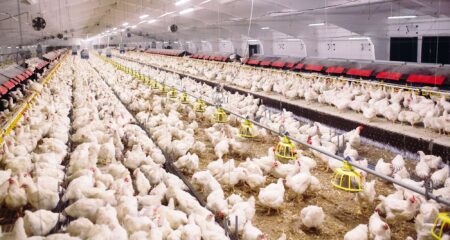What Happened
In years when crops are highly rated in late summer, prices tend to bottom early, often before harvest. This month’s USDA World Agricultural Supply and Demand Estimates (WASDE) report was filled with negative potential for corn prices, yet the December corn futures contract only lost ¼¢ by the end of the week. The big picture suggests that prices may be trying to establish a contract low. Predicting a bottom is challenging. However, when prices fail to fall on negative news, a signal is sent to the marketplace that buyers should be ready and those who are short (sold) should consider buying back contracts.
Why This Is Important
In 2024, corn futures bottomed in the last week of August and began a long upward trend that lasted into February, with old-crop contracts gaining more than a dollar and most contracts trading above $5. It is believed farmers did a good job of selling into the rally with stored crops. However, the December 2025 corn contract has yet to breach the $4.80 mark. With hindsight, selling corn at the $4.75 level or higher looks wonderful. Yet, it is tough to pull the trigger when that price (not a great price historically) occurs in February, well before the South American crop is produced and arguably three to five months before a true weather market for the Northern Hemisphere exists.
Good weather throughout the world has maximized production capabilities.The question now facing producers is: If December 2026 corn futures (currently trading near $4.50) rally to $4.75 (or higher), should you be making sales? Great genetics, equipment, farming practices, and dedicated, focused farmers growing anything less than big crops seems unlikely. Yet, world demand is growing, and a weather-related price rally is likely. Selling too soon could be problematic, should the market price shoot through $4.75. How do you sell and not get run over, yet sell responsibly at prices that could quickly erode?
What Can You Do?
Be strategic in your approach. While a risk, consider buying call options or bull call option spreads on December 2026 futures before you make a sale. What better time to buy when prices may be the lowest level for the year? The calls or bull call spreads are bought when sales are not yet in place. Some might feel this is putting the cart in front of the horse. The goal, however, is to own fixed-risk tools and then place orders in cash, futures, or hedge-to-arrive contracts to sell when the December contract trades to a desirable level. With the options in place, there should be no hesitation or wondering if you should sell. Your orders are at work. Let them be executed. If a price rally occurs, having a pre-planned strategy to allow execution is critical. Often a price rally occurs only to quickly disappear. It is tough to be in the right place at the right time consistently. Having a strategy in place helps eliminate this issue. Pre-planning a strategy makes good sense and good marketing.
Find What Works for You
Work with a professional to find the strategy or strategies best suited for your operation. Communication is important. Ask critical questions and garner a full comprehension of consequences and potential rewards before executing. The idea is to make good decisions for the operation rather than emotionally charged responses to market moves, which are always dynamic.
Editor’s Note: If you have any questions on this Perspective, feel free to contact Bryan Doherty at Total Farm Marketing: (800) 334-9779.
Disclaimer: The data contained herein is believed to be drawn from reliable sources but cannot be guaranteed. Individuals acting on this information are responsible for their own actions. Commodity trading may not be suitable for all recipients of this report. Futures and options trading involve significant risk of loss and may not be suitable for everyone. Therefore, carefully consider whether such trading is suitable for you in light of your financial condition. Examples of seasonal price moves or extreme market conditions are not meant to imply that such moves or conditions are common occurrences or likely to occur. Futures prices have already factored in the seasonal aspects of supply and demand. No representation is being made that scenario planning, strategy, or discipline will guarantee success or profits. Any decisions you may make to buy, sell, or hold a futures or options position on such research are entirely your own and not in any way deemed to be endorsed by or attributed to Total Farm Marketing. Total Farm Marketing and TFM refer to Stewart-Peterson Group Inc., Stewart-Peterson Inc., and SP Risk Services LLC. Stewart-Peterson Group Inc. is registered with the Commodity Futures Trading Commission (CFTC) as an introducing broker and is a member of the National Futures Association. SP Risk Services, LLC is an insurance agency and an equal opportunity provider. Stewart-Peterson Inc. is a publishing company. A customer may have relationships with all three companies. SP Risk Services LLC and Stewart-Peterson Inc. are wholly owned by Stewart-Peterson Group Inc. unless otherwise noted, services referenced are services of Stewart-Peterson Group Inc. Presented for solicitation.
About the Author: With the wisdom of 30 years at Total Farm Marketing and a following across the Grain Belt, Bryan Doherty is deeply passionate about his clients, their success, and long-term, fruitful relationships. As a senior market advisor and vice president of brokerage solutions, Doherty lives and breathes farm marketing. He has an in-depth understanding of the tools and markets, listens, and communicates with intent and clarity to ensure clients are comfortable with the decisions.


:max_bytes(150000):strip_icc()/SuccessfulFarmingShareImage-8fed6410b43147a19ed5ea1e3243227f.png)

:max_bytes(150000):strip_icc()/IMG_7575-ac6db3006a2145109bcc2df421c7a962.jpeg)


:max_bytes(150000):strip_icc()/Dented-Corn-Ears-d9a26cd72ba44d4cbcc775b8eb11f783.jpg)


:max_bytes(150000):strip_icc()/Markets-3-Corn-up-3-19bdbeee0041452db8bce0a0f1c8b883.jpeg)
